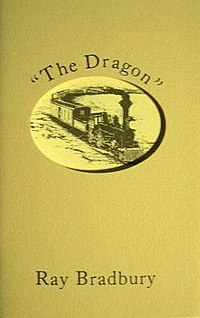
Fahrenheit 451 is a 1953 dystopian novel by American writer Ray Bradbury. It presents a future American society where books have been personified and outlawed and "firemen" burn any that are found. The novel follows in the viewpoint of Guy Montag, a fireman who soon becomes disillusioned with his role of censoring literature and destroying knowledge, eventually quitting his job and committing himself to the preservation of literary and cultural writings.

Ray Douglas Bradbury was an American author and screenwriter. One of the most celebrated 20th-century American writers, he worked in a variety of genres, including fantasy, science fiction, horror, mystery, and realistic fiction.
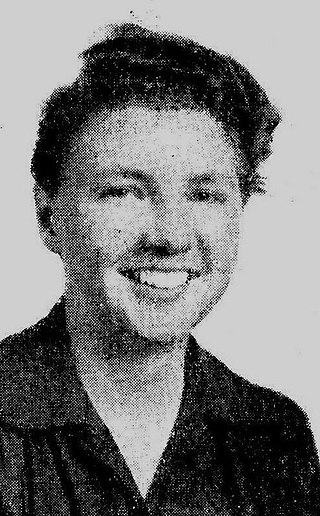
Leigh Douglass Brackett was an American science fiction writer known as "the Queen of Space Opera." She was also a screenwriter, known for The Big Sleep (1946), Rio Bravo (1959), and The Long Goodbye (1973). She worked on an early draft of The Empire Strikes Back (1980), elements of which remained in the film; she died before it went into production. In 1956, her book The Long Tomorrow made her the first woman ever shortlisted for the Hugo Award for Best Novel, and, along with C. L. Moore, one of the first two women ever nominated for a Hugo Award. In 2020, she posthumously won a Retro Hugo for her novel The Nemesis From Terra, originally published as Shadow Over Mars.

Damon Francis Knight was an American science fiction author, editor, and critic. He is the author of "To Serve Man", a 1950 short story adapted for The Twilight Zone. He was married to fellow writer Kate Wilhelm.
Entertaining Comics, more commonly known as EC Comics, was an American publisher of comic books, which specialized in horror fiction, crime fiction, satire, military fiction, dark fantasy, and science fiction from the 1940s through the mid-1950s, notably the Tales from the Crypt series. Initially, EC was owned by Maxwell Gaines and specialized in educational and child-oriented stories. After Max Gaines' death in a boating accident in 1947, his son William Gaines took over the company and began to print more mature stories, delving into the genres of horror, war, fantasy, science-fiction, adventure, and others. Noted for their high quality and shock endings, these stories were also unique in their socially conscious, progressive themes that anticipated the Civil Rights Movement and the dawn of the 1960s counterculture. In 1954–55, censorship pressures prompted it to concentrate on the humor magazine Mad, leading to the company's greatest and most enduring success. Consequently, by 1956, the company ceased publishing all of its comic lines except Mad.
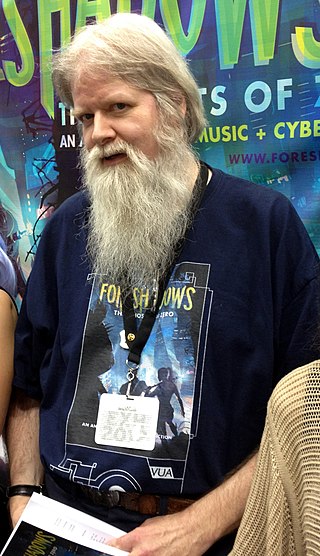
Ed Greenwood is a Canadian fantasy writer and the original creator of the Forgotten Realms game world. He began writing articles about the Forgotten Realms for Dragon magazine beginning in 1979, and subsequently sold the rights to the setting to TSR, the creators of the Dungeons & Dragons roleplaying game, in 1986. He has written many Forgotten Realms novels, as well as numerous articles and D&D game supplement books.

Dandelion Wine is a 1957 novel by Ray Bradbury set in the summer of 1928 in the fictional town of Green Town, Illinois, based upon Bradbury's childhood home of Waukegan, Illinois, and serving as the first novel in his Green Town Trilogy. The novel developed from the short story "Dandelion Wine", which appeared in the June 1953 issue of Gourmet magazine.
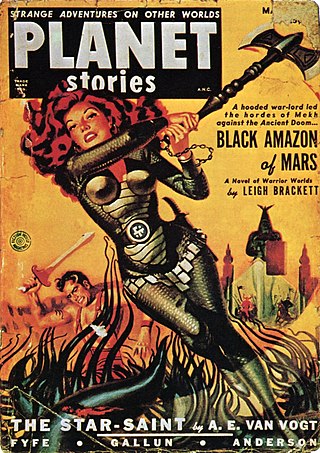
Planet Stories was an American pulp science fiction magazine, published by Fiction House between 1939 and 1955. It featured interplanetary adventures, both in space and on some other planets, and was initially focused on a young readership. Malcolm Reiss was editor or editor-in-chief for all of its 71 issues. Planet Stories was launched at the same time as Planet Comics, the success of which probably helped to fund the early issues of Planet Stories. Planet Stories did not pay well enough to regularly attract the leading science fiction writers of the day, but occasionally obtained work from well-known authors, including Isaac Asimov and Clifford D. Simak. In 1952 Planet Stories published Philip K. Dick's first sale, and printed four more of his stories over the next three years.

R Is for Rocket (1962) is a short story collection by American writer Ray Bradbury, compiled for Young Adult library sections. It contains fifteen stories from earlier Bradbury collections, and two previously uncollected stories.
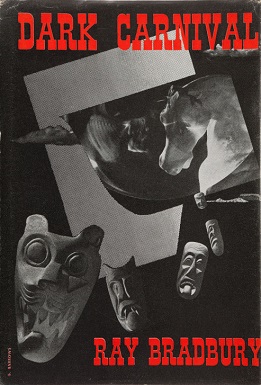
Dark Carnival is a short story collection by American writer Ray Bradbury, first published October 1947 by Arkham House. It was his debut book, and many of the stories were reprinted elsewhere.
"The Long Rain" is a science fiction short story by American writer Ray Bradbury. This story was originally published in 1950 - under a different title indicative of its ending - in the magazine Planet Stories, and then in the collection The Illustrated Man. The story tells of four men who have crashed on Venus, where it is always raining.
A fix-up is a novel created from several short fiction stories that may or may not have been initially related or previously published. The stories may be edited for consistency, and sometimes new connecting material, such as a frame story or other interstitial narration, is written for the new work. The term was coined by the science fiction writer A. E. van Vogt, who published several fix-ups of his own, including The Voyage of the Space Beagle, but the practice exists outside of science fiction. The use of the term in science fiction criticism was popularised by the first (1979) edition of The Encyclopedia of Science Fiction, edited by Peter Nicholls, which credited van Vogt with the creation of the term. The name “fix-up” comes from the changes that the author needs to make in the original texts, to make them fit together as though they were a novel. Foreshadowing of events from the later stories may be jammed into an early chapter of the fix-up, and character development may be interleaved throughout the book. Contradictions and inconsistencies between episodes are usually worked out.
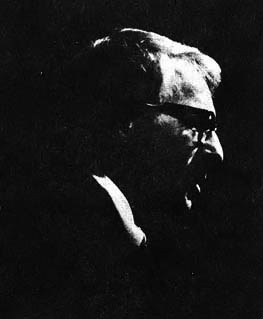
The following is a list of works by Ray Bradbury.
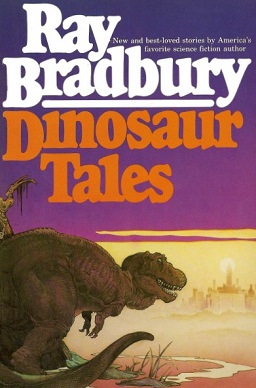
Dinosaur Tales is a 1983 short story collection by Ray Bradbury. Several of the stories are original to this collection. Other stories were first published in Collier's and The Saturday Evening Post magazines. The collection contains over 60 pages of illustrations by Gahan Wilson, William Stout, Steranko, Moebius, Overton Loyd, Kenneth Smith and David Wiesner.

Selected from Dark They Were, and Golden-Eyed is a collection that contains the Ray Bradbury short story "Dark They Were, and Golden-Eyed" with several essays about the story. It was published in 1991 by Signal Hill Publications as part of their Writers' Voices Series for students. The story first appeared in the magazine Thrilling Wonder Stories in 1949.

Far Boundaries is an anthology of science fiction stories edited by American writer and anthologist August Derleth. It was first published by Pellegrini & Cudahy in 1951. Many of the stories had originally appeared in the magazines Variety, Dublin Literary Magazine, Knight’s Quarterly Magazine, Scribner's, Astounding Stories, The Arkham Sampler, Planet Stories, Super Science Stories, Thrilling Wonder Stories, Startling Stories, The Magazine of Fantasy & Science Fiction, Blue Book and Galaxy.
Dark They Were and Golden Eyed was a science fiction bookshop and comic book retailer in London during the 1970s; the largest of its kind in Europe. Specialising in science fiction, occultism, and Atlantis, the central London shop also played a key role in bringing American underground comics to the United Kingdom. It also sold American editions of mainstream science fiction books that were not easily obtained anywhere else.

The Nebula Awards annually recognize the best works of science fiction or fantasy published in the United States. The awards are organized and awarded by the Science Fiction and Fantasy Writers Association (SFWA), a nonprofit association of professional science fiction and fantasy writers. They were first given in 1966 at a ceremony created for the awards, and are given in four categories for different lengths of literary works. A fifth category for film and television episode scripts was given 1974–78 and 2000–09, and a sixth category for game writing was begun in 2018. In 2019 SFWA announced that two awards that were previously run under the same rules but not considered Nebula awards—the Andre Norton Award for Middle Grade and Young Adult Fiction and the Ray Bradbury Award for Outstanding Dramatic Presentation—were to be considered official Nebula awards. The rules governing the Nebula Awards have changed several times during the awards' history, most recently in 2010. The SFWA Nebula Conference, at which the awards are announced and presented, is held each spring in the United States. Locations vary from year to year.
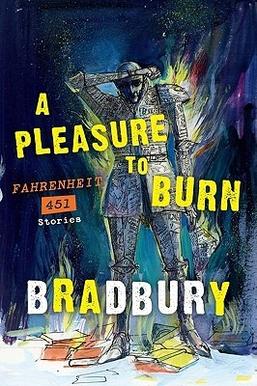
A Pleasure to Burn: Fahrenheit 451 Stories is a collection of short stories by American writer Ray Bradbury, first published August 17, 2010. A companion to novel Fahrenheit 451, it was later released under the Harper Perennial imprint of HarperCollins publishing was in 2011.

Futuria Fantasia was an American science fiction fanzine created by Ray Bradbury in 1938, when he was 18 years old. Though only four issues of the fanzine were published, its list of contributors included Hannes Bok, Forrest J. Ackerman, Henry Kuttner, Damon Knight, and Robert A. Heinlein.
